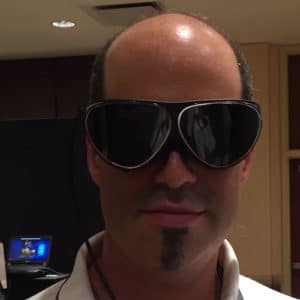A press conference yesterday (August 9, 2016) brought one small part of the future of Virtual Reality (VR) to the table a little early. Chinese VR developer Dlodlo (www.dlodlo.com) introduced a compact sunglass-like design for a full VR headset, a major step towards a 10-year goal that Facebook set for Oculus at its F8 Developer Conference just this past April.
The form factor is going to keep getting smaller… eventually we’re going to have normal looking glasses that can do both virtual and augmented reality…at that point expensive items, like televisions, will be one dollar apps in an app store.
— Mark Zuckerburg, Facebook Founder
The Dlodlo (pronounced “doh-doh”) Glass V1 is remarkably thin for a virtual reality headset, only 0.63 inches (16mm, about the width of a US penny). Featuring a body constructed from carbon-fiber, the Glass V1 will weigh just 3.1 ounces (78g, about half as much as an iPhone 6S Plus).

Image Credit: Dlodlo
Specifications for the Dlodlo Glass V1 claim 2400×1200 resolution (1200×1200 in each lens), 800+ PPI (pixels per inch) with a 90Hz refresh rate and a 105° field of view. The Glass V1 will connect to either a personal computer or a specialized interface device the size of a smartphone, the Dlodlo D1.
In addition to announcing the VR hardware, Dlodlo introduced its own content platform featuring 3D videos, VR panoramas and games for virtual reality environments.
Dlodlo has been committed to getting more people to enjoy the ultimate virtual reality experience any time at anywhere. By integrating the platforms and resources in hardware, software, application, platform and community and through the VR glasses, we aim to create a complete VR eco-system, Dlodlo World.
— Li Gang, Dlodlo CEO

Image Credit: The Architechnologist
A crowd-funding campaign will launch in September to bring the V1 to the consumer market and a limited-quantity sale of the developer version of the Glass V1 will begin at the same time. The price for the consumer release of the Dlodlo Glass V1 was announced at $559 USD. Future additions to the product line were outlined at the press event; including an A1 version for use with iPhones and the X1, which would be an all-in-one head-mounted device integrating both the display and the mainframe.
The development of a headset that is even close to Facebook’s goal of a sunglass-esque design, rather than a box that needs to be mounted to the user’s head, is a tremendous step in the right direction for the acceptance of virtual reality.
